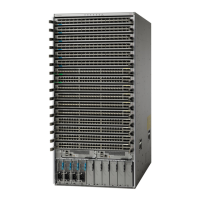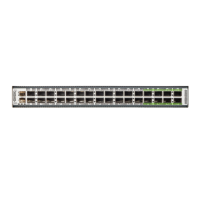n+1 redundancy mode
The power supply that outputs the most power provides the reserve power so that it can take over for
any other power supply that fails, and all of the other installed power supplies provide the available
power. You activate this power mode by using the power redundancy-mode ps-redundant command.
For example, if the power requirement for a switch is 5.2 kW and the switch has two 3.0-kW power
supplies outputting 3.0 kW each, consider the following power planning scenarios:
• Scenario 1—No added power supplies
One 3-kW power supply provides the reserve power and the other 3-kW power supply, also
outputting 3.0 kW, provides the available power. The available power (3.0 kW) does not meet
the switch requirements of 5.2 kW, so the switch powers up except for some of its line cards.
• Scenario 2—Adding one 3-kW power supply
One 3-kW power supply, which outputs 3.0 kW, provides the reserve power and the other two
3-kW power supplies, also outputting 3.0 kW each, provide a sufficient amount of power (6.0
kW) to meet the switch requirements (5.2 kW), so the entire switch powers up.
The following table shows the results for each scenario.
ResultReserve
Power
Available
Power
Output (kW) for Power
Supplies
Power
Requirement
Scenario
321
Available power is less
than the power
requirement for the
switch, so you cannot
power the entire switch
(one or two of the line
cards will not be able
to power up).
3.0 kW3.0 kW
—
3.0 kW3.0 kW5.2 kW1
Available power
exceeds the power
requirement for the
switch, so the entire
switch can power up.
3.0 kW6.0 kW3.0 kW3.0 kW3.0 kW5.2 kW2
Cisco Nexus 9508 NX-OS Mode Switch Hardware Installation Guide
71
Managing the Switch
Power Mode Configuration Guidelines

